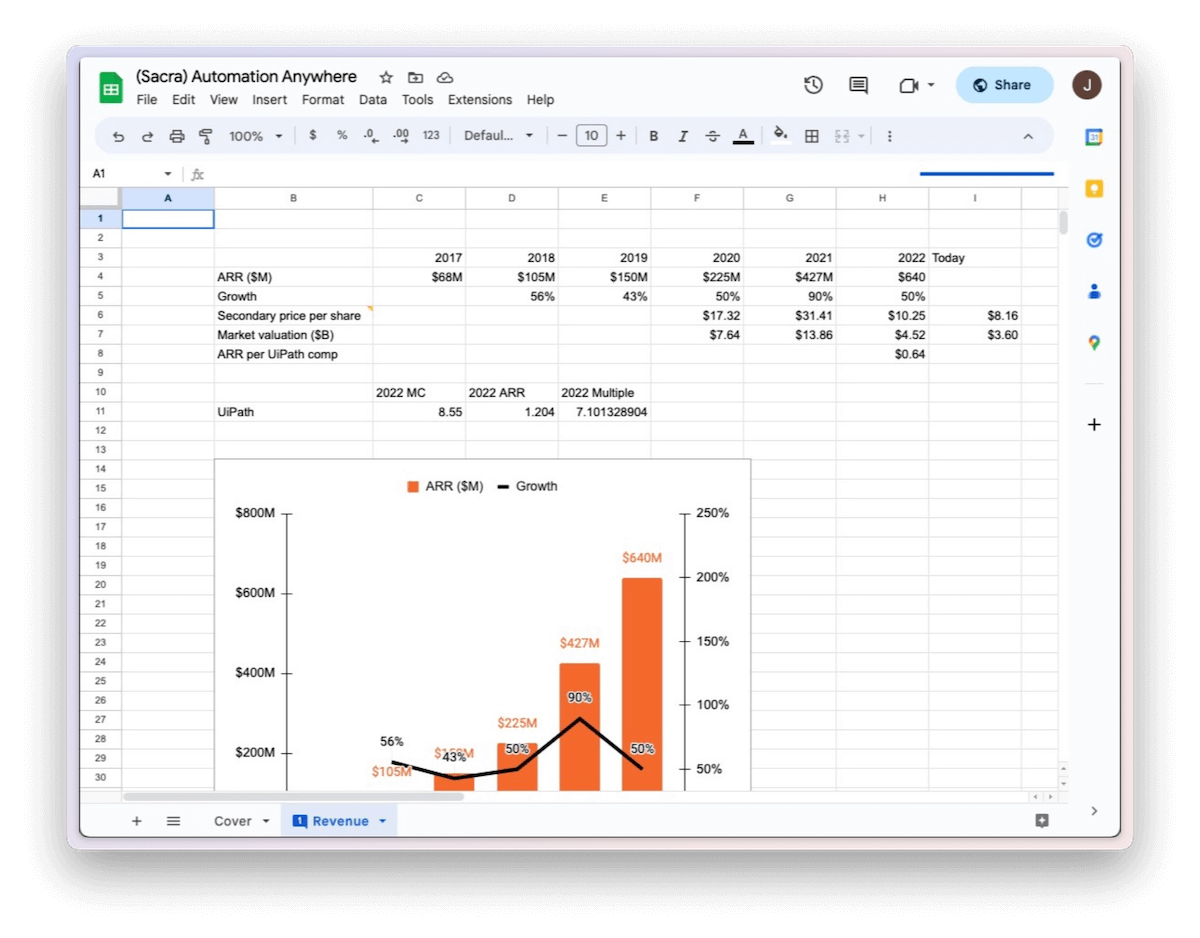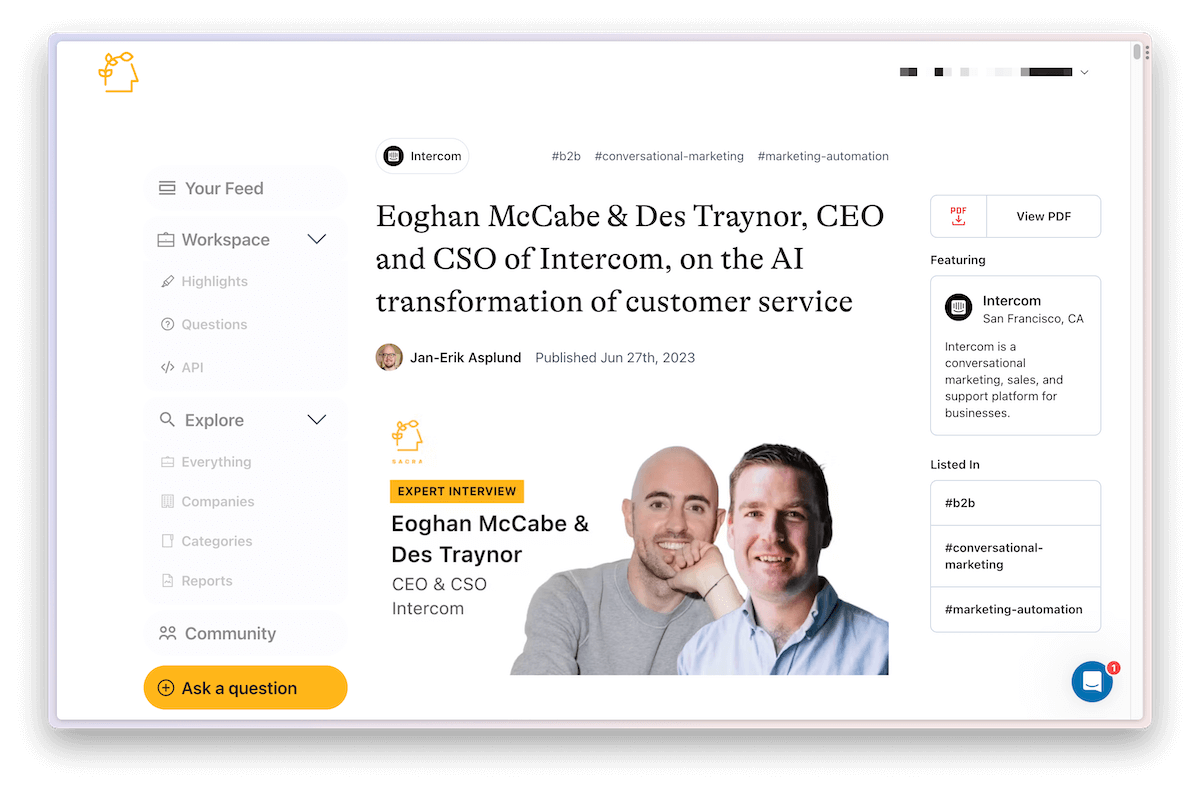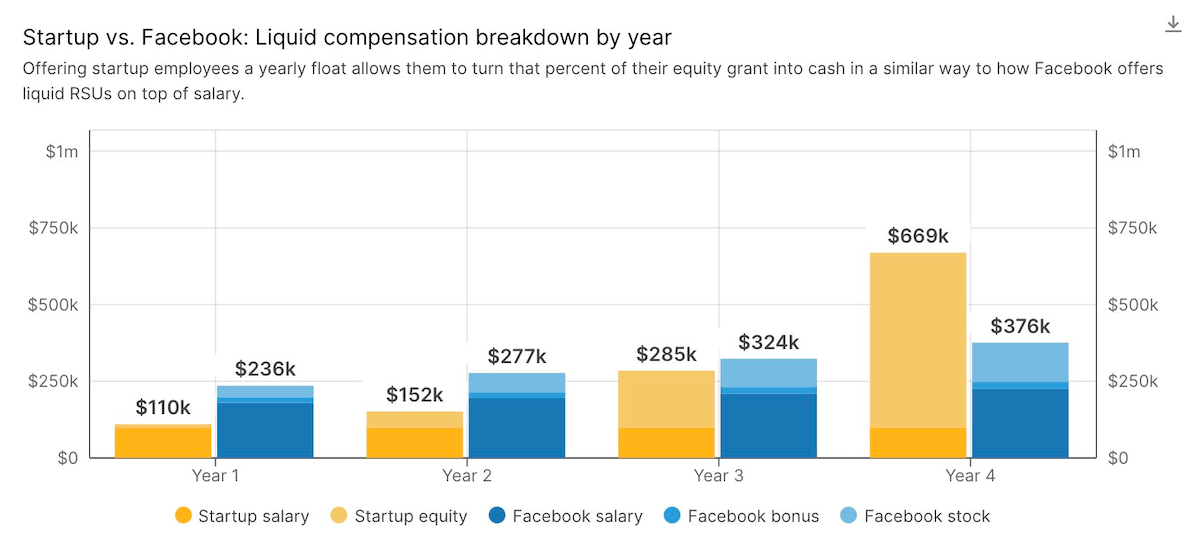Take an ounce of business analysis. Add a dash of narrative, a sprinkling of journalism, and a pinch of content marketing. Stir until it simmers with insight, then serve to critical startup investors who feast on this research.
Sounds like alchemy, or perhaps a fairy tale? Lead turning into gold, princes into frogs and all that. Sacra, a private markets research company, performs this magic daily. Cofounder Jan-Erik Asplund explains how this approach built their research platform, counting 344 private startups and 13,000 email subscribers.
The quest: A Bloomberg for private markets
In 2020, the rise of Carta’s private stock exchange and the growth of platforms like Nasdaq PM, EquityZen, Forge, and AngelList, allowed investors to trade in shares of private companies. Because of this trend, Sacra cofounders Jan-Erik and Walter Chen noticed a demand for reliable information about private companies.
As Walter said in another interview: “We did a ton of long-form research (and we still do at Animalz) on the private markets and we found that (1) there’s a scarcity of private markets research because of how companies control the dissemination of info and keep it close to the vest and (2) there’s a huge demand for this type of research.”
Essentially, investors needed a Bloomberg or Morningstar for private markets. “If anyone was gonna create such a research platform, we felt like we could have a good shot at it,” Jan-Erik says. They had built Animalz into a leading content marketing agency based on long-form, research-driven articles, often through interviews with founders, investors, and other folks in the tech startup ecosystem.
Those skills, experience, and connections could help them add something to the financial analysis landscape that didn’t exist yet.

Before Sacra, that landscape looked like this:
YouTubers and Substackers who tell some story but lack rigorous analysis or data. (”Picture a thumbnail photo of a Tesla in space with some Gen Z guy telling you to buy shares of Tesla now,” says Jan-Erik.)
Seeking Alpha, a crowd-sourced content service for financial markets, mostly repackages existing financial data (”They take the most recent quarterly report of a company and turn it into a blog post.”)
Banks and research analysts offering in-depth, data-rich reports, given that public companies must disclose a lot of information. But these tomes aren’t exactly page-turners—investors read less than 1% of these reports.
None of these options catered to private markets. Most private company information came from their investors (hello bias), marketing, and PR.
“There is so little information because these companies don’t have to disclose anything. So you’re stuck with whatever the company has said.” – Jan-Erik Asplund, cofounder Sacra
Sacra stepped into this gap and set themselves a high bar: create private company research that stands out and gets read through the Animalz method of storytelling, content journalism, and access to founders.
The magic: A mix of data, journalism, and storytelling
Sacra’s formula seems straightforward: startup data + expert interviews = insightful stories. The magic happens in the details of this process.
1. Build a data model and perspective 📊
When Jan-Erik and his team look at a company, they always start with data. “A fair number of companies will disclose that they made this much money last year, and they grew, you know, 10 percent year over year.” Sacra can work backward from these public statements or use other sources to fill data gaps.

Often such research involves looking at a startup’s valuation and imagining the path to fulfilling that value. Jan-Erik says: “I don’t know what Zapier’s valuation is, but the valuation implies that they can grow 10x or 100x from where they are today… What would that company actually look like at that size at that scale?”
2. Talk to experts, executives, and backchannel sources 🕵️♀️
Sacra talks to industry experts and company insiders—founders, CEOs, executives, employees—to test ideas, validate numbers, and fill in gaps in a company’s profile. They also backchannel with startup employees and investors to get up-to-date info or verify the figures they’ve put together.
Most of these conversations are voluntary, some paid. Often they’re attributed, other times anonymized. These talks enrich the reports with insights and nuances numbers alone can’t capture.

3. Put a story on top 🍒
Sacra’s stories pull people in—and through. Dry data turns off people’s brains. The data and interviews provide a foundation of factual, trustworthy information, but a well-crafted narrative hooks the reader, weaves the numbers and expert insights together, and makes the content more accessible.
Jan-Erik says they’ve developed two storytelling hooks that work particularly well for Sacra: golden nuggets and unusual comparisons.
Golden nuggets
Golden nuggets communicate a story’s core insights. These tidbits of information, often expressed in a chart or other visual, are where Sacra’s data analysis and narrative meet. They’re like the elevator pitch of a story and drive conversations on social media.
“Our origins in content marketing make us particularly good at identifying these nuggets,” says Jan-Erik. “At Animalz, we create long-form, well-researched articles for our customers. That process also involves finding the essence of a story from lots of information to create traction on social media, SEO, and other distribution channels.”
An example of a golden nugget from Sacra is the chart below, showing how much private startup employees could earn if they’re allowed to “float” (sell) some of their stock (as compared to public company employees).

This chart simplifies a complex point—’employees could earn more at private than public companies if they were allowed to sell their shares.’ But it also serves as an entrance into a much larger story: Sacra’s full report on the $225 billion market for private equity trading.
Unusual comparisons
Surprising juxtapositions can be informative or help put a different perspective on a company. While clichés like “the Amazon of X” or “the Uber of Y” usually don’t tell you much, Sacra has attracted readers with unusual comparisons, like:

These one-liners don’t always make immediate sense. Take the example of Airtable. Comparing this productivity tool to Roblox, a gaming company, seems odd. How can a spreadsheet on steroids be like a game? Yet the comparison also intrigues, making many social passersby stop their feeds, click, and read.
Once you dive into such a report, you’ll see the logic of the comparison. In this case, Roblox allows players to code their own video games using the proprietary Roblox Studio engine. Airtable has a similar “engine” that people can use to build sophisticated tools and workflows for their data.
The gold: Research people actually read
Most research isn’t read. At best, its headlines get clicked.
Sacra’s narratives ensure readers stick around after the click, and a dash of content marketing pulls people in. “Of course, we pay attention to marketing fundamentals like SEO, deliverability, CTAs, capturing emails, and landing pages for our reports and email newsletter,” says Jan-Erik. “And we run a lot of experiments.”
With 13,000 email subscribers to their weekly emails and a research database that looks like a who’s who of the global startup scene, Sacra’s formula is working. Investors read, discuss, and share its reports, proving that a blend of research and narrative can transform financial information into content gold.
Want to turn your data, knowledge, and stories into content gold like Sacra?We help companies grow through great content.Let’s talk!
